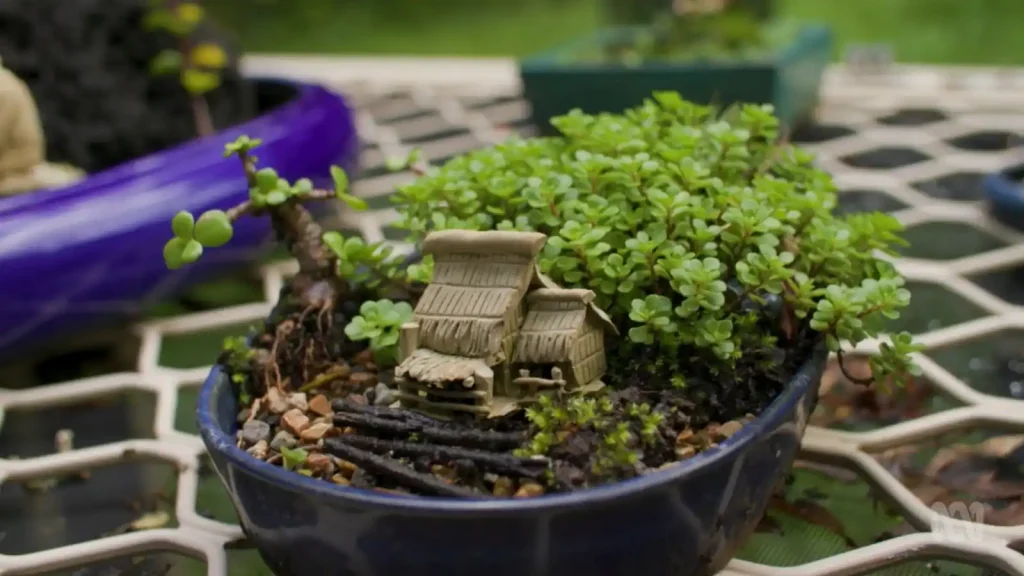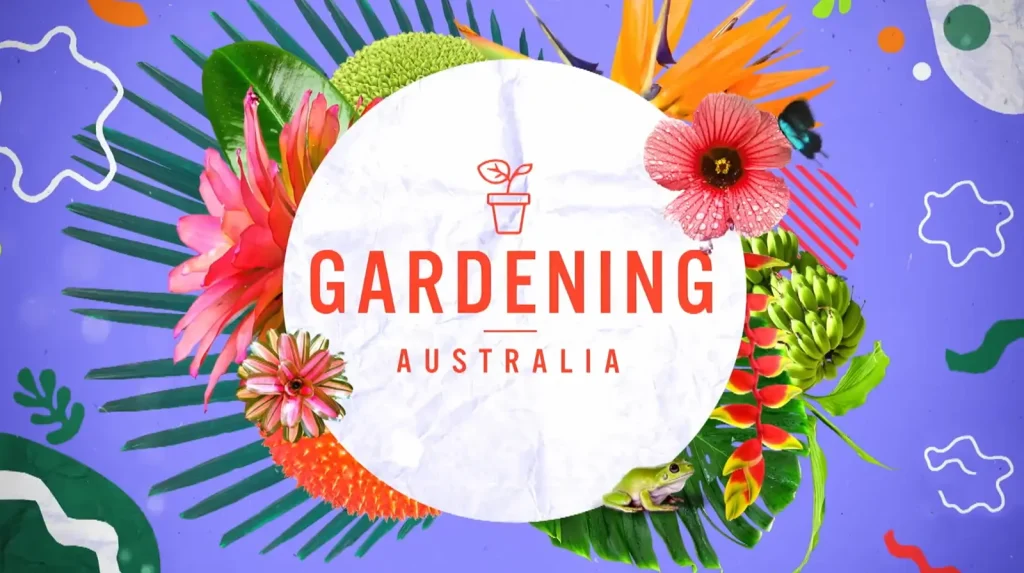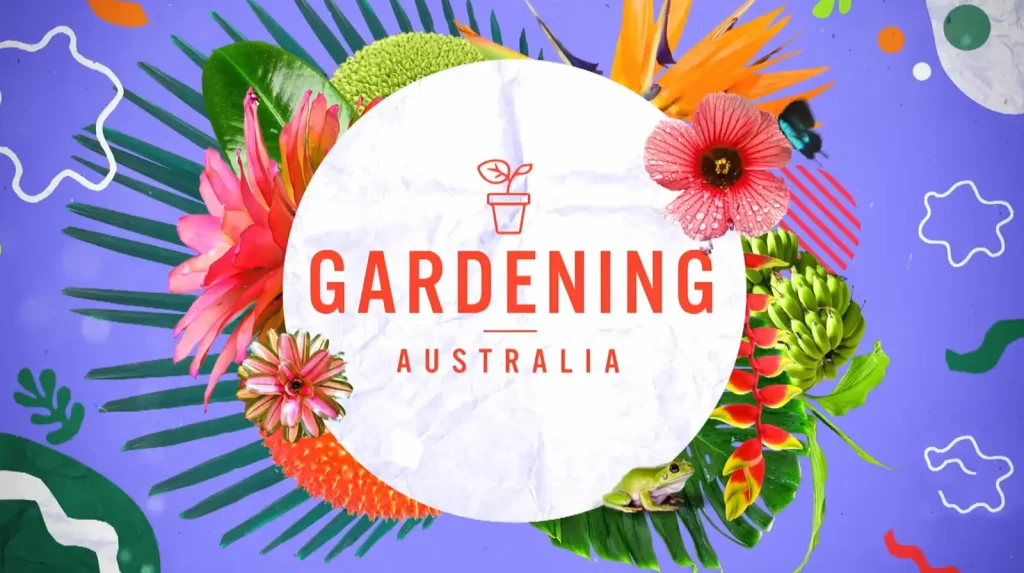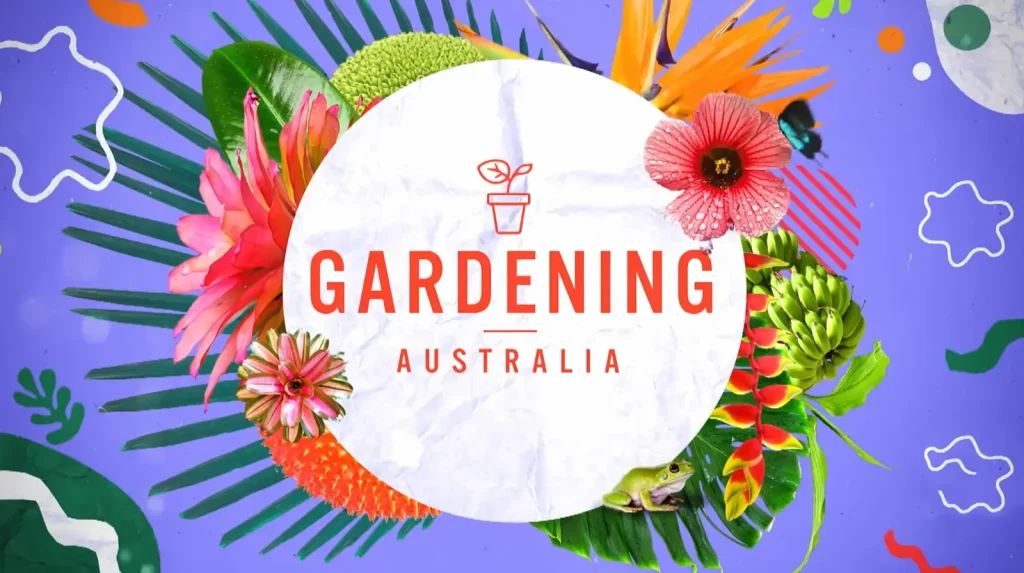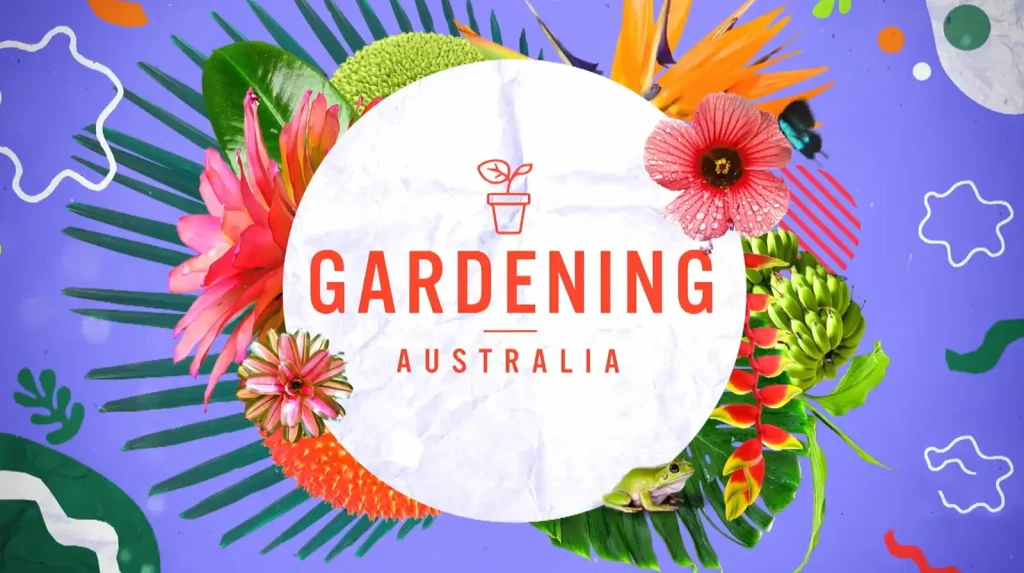In Gardening Australia 2024 episode 22, titled “Winter: Endangered Birds & Artful Bonsai,” we embark on an enriching journey that highlights the beauty and importance of conservation, artistry, and innovative gardening practices. Hannah, our passionate environmentalist, takes us to a thriving sanctuary where dedicated conservationists and enthusiastic children work tirelessly to save endangered bird species. Witness the inspiring stories of these young conservationists as they engage in various activities, from feeding and nurturing the birds to learning about their habitats and behaviors.
Hannah delves deep into the challenges these species face, emphasizing the crucial role that education and community involvement play in wildlife preservation. This segment not only showcases the remarkable efforts of these individuals but also underscores the significance of protecting our natural world for future generations.
Next, Costa, our charismatic garden enthusiast, transports us to a breathtaking ornamental garden that promises to leave viewers in awe. This garden is a living masterpiece, featuring a diverse array of plants meticulously arranged to create stunning visual effects. Costa explores the intricate design elements and horticultural techniques that make this garden a true work of art. He shares insightful tips on how to incorporate ornamental plants into your own garden, enhancing its aesthetic appeal while promoting biodiversity. This segment is a feast for the eyes, offering a tranquil escape into a world where nature and artistry seamlessly blend.
Meanwhile, Tammy, our creative DIY expert, engages in a delightful craft project, crafting a beautiful bay leaf wreath. She guides viewers through each step of the process, from selecting the freshest bay leaves to arranging them into a cohesive and elegant design. Tammy’s enthusiasm is infectious as she demonstrates how this simple yet elegant wreath can add a touch of natural beauty to any home. Along the way, she shares interesting facts about bay leaves and their historical uses, enriching the crafting experience with educational tidbits. This segment is perfect for those looking to bring a bit of the outdoors inside, especially during the winter months when greenery can be a refreshing addition to home decor.
Jane, our innovative gardener, takes us on a tour of a small yet ingenious garden that maximizes space and creativity. This garden is a testament to the idea that size does not limit potential. Jane explores various techniques used to cultivate a lush and productive garden in a confined area, including vertical planting, container gardening, and the use of multi-functional plants. She interviews the garden’s creator, who shares their vision and the motivation behind this innovative project. This segment offers practical advice for urban dwellers and those with limited gardening space, proving that anyone can cultivate their own green oasis with a bit of creativity and resourcefulness.
Lastly, we meet a prolific bonsai artist whose work transcends mere gardening and enters the realm of fine art. This segment delves into the meticulous and meditative practice of bonsai cultivation. The artist shares their journey, revealing the patience, precision, and passion required to create and maintain these miniature masterpieces. Viewers are treated to a showcase of the artist’s finest works, each bonsai tree telling a unique story through its carefully crafted form. This segment not only highlights the beauty of bonsai but also explores the philosophical and cultural significance behind this ancient art form, offering a profound appreciation for this timeless practice.
Gardening Australia 2024 episode 22 – “Winter: Endangered Birds & Artful Bonsai” is a rich tapestry of stories that celebrate the wonders of nature and human creativity. From the heartwarming efforts to save endangered birds to the serene beauty of ornamental gardens and the intricate artistry of bonsai, this episode invites viewers to explore the diverse and inspiring world of gardening. Each segment is a reminder of the profound connection between humans and nature, encouraging viewers to cultivate their own green spaces and contribute to the preservation and appreciation of our environment. Join us for an episode filled with inspiration, knowledge, and the timeless joy of gardening.
Gardening Australia 2024 episode 22
Winter Gardening and Conservation
The importance of winter gardening in Australia
As the crisp winter air settles over Australia, many might be tempted to retreat indoors, leaving their gardens to fend for themselves. However, this cool season offers a unique opportunity to nurture and transform our outdoor spaces. Winter gardening in Australia is like tending to a sleeping giant – with the right care and attention, it will awaken in spring with renewed vigor and beauty.
For many Aussie gardeners, winter is a time of preparation and anticipation. It’s the perfect moment to lay the groundwork for a spectacular spring and summer display. From planting bulbs that will burst forth with color when the weather warms, to pruning deciduous trees and shrubs, winter activities set the stage for year-round garden health. Moreover, this cooler season allows for the cultivation of vegetables that thrive in lower temperatures, ensuring a bountiful harvest of winter greens, root vegetables, and hearty brassicas.
Overview of the episode’s main themes: endangered birds and bonsai art
Winter’s quiet beauty also provides a backdrop for two fascinating aspects of horticulture and conservation: the protection of endangered birds and the ancient art of bonsai. These themes, seemingly disparate, are woven together by the thread of human interaction with nature, showcasing our capacity to both preserve and artfully shape the natural world around us.
The plight of endangered birds, particularly in unique ecosystems like Bruny Island, highlights the delicate balance of our environment. As winter strips trees bare, it reveals not just branches, but the intricate web of life that depends on these habitats. This season of stillness offers a rare glimpse into the lives of these feathered friends, reminding us of our role as stewards of the land.
Meanwhile, the art of bonsai stands as a testament to the patience and dedication of gardeners who shape miniature worlds with their hands. Like a painter working on a living canvas, bonsai artists use winter’s dormancy to their advantage, pruning and wiring to create sculptures that will flourish with the return of spring. This ancient practice bridges cultures and generations, offering a meditative approach to gardening that resonates deeply in our fast-paced world.
As we delve into these themes, we’ll discover how winter gardening intertwines with broader environmental concerns and artistic expressions. Through protecting endangered species and cultivating tiny trees, we learn valuable lessons about persistence, attention to detail, and the profound impact of small actions. Winter, far from being a dormant period, emerges as a season of quiet transformation and thoughtful stewardship in the garden.
Protecting Endangered Birds on Bruny Island
Introduction to Bruny Island’s unique ecosystem
Nestled off Tasmania’s southeastern coast, Bruny Island emerges as a haven for biodiversity. This picturesque isle, with its rugged coastlines and lush forests, is more than just a scenic wonder – it’s a crucial sanctuary for some of Australia’s most vulnerable bird species. The island’s varied landscapes, from coastal heath to towering eucalyptus forests, create a tapestry of habitats that support an incredible array of wildlife.
As you step onto Bruny Island, you’re immediately enveloped by the symphony of nature. The air is filled with the calls of endemic birds, each species contributing its unique voice to the island’s chorus. This auditory landscape is a testament to the island’s ecological importance, particularly for bird conservation. However, beneath this seeming abundance lies a delicate balance, one that conservationists are working tirelessly to maintain.
The plight of the forty-spotted pardalote
Habitat loss and its impact
At the heart of Bruny Island’s conservation efforts is a tiny bird with an outsized importance – the forty-spotted pardalote. This diminutive creature, no larger than a ping-pong ball, carries the weight of an entire ecosystem on its wings. Unfortunately, the forty-spotted pardalote is facing a crisis of survival, primarily due to habitat loss. As human development encroaches on their territory, these birds find themselves in an increasingly precarious position.
The impact of habitat loss on the forty-spotted pardalote is akin to removing the foundation of a house. Without their specific habitat requirements met, these birds struggle to find food, nesting sites, and protection from predators. Consequently, their population has plummeted alarmingly in recent years, making them one of Australia’s most endangered bird species.
The importance of white gum trees
Central to the forty-spotted pardalote’s survival is the white gum tree, or Eucalyptus viminalis. These majestic trees are not just part of the scenery; they’re lifelines for the pardalotes. The relationship between bird and tree is so intricate that it’s almost poetic – a dance of survival played out in the forest canopy.
White gum trees provide the pardalotes with their primary food source: a sugary substance called manna. This manna, produced by the trees, is like nature’s candy for these tiny birds. Moreover, the trees offer ideal nesting sites in their hollows and crevices. As white gum forests have declined, so too have pardalote numbers, highlighting the critical need for habitat preservation and restoration.
Conservation efforts at Inala Conservation Reserve
Revegetation projects
In response to the pardalote’s plight, the Inala Conservation Reserve on Bruny Island has become a beacon of hope. Their revegetation projects are like carefully orchestrated symphonies, each plant playing its part in recreating the complex ecosystem these birds need. By meticulously planting white gum trees and other native species, conservationists are essentially building new homes for the pardalotes.
These projects are not just about planting trees; they’re about recreating entire microcosms. Each sapling represents a future haven for wildlife, a potential nesting site, or a food source. It’s a long-term investment in the island’s biodiversity, with the forty-spotted pardalote as the flagship species guiding these efforts.
Nest box programs
While revegetation is crucial, it takes time for trees to mature and develop natural hollows. To bridge this gap, the reserve has implemented an innovative nest box program. These artificial homes, carefully designed to mimic natural tree hollows, provide immediate housing solutions for the pardalotes.
The nest boxes are more than just bird houses; they’re lifelines. Strategically placed throughout the reserve, they offer safe havens for breeding pairs. Each successful nesting season in these boxes is a small victory in the battle against extinction. Moreover, these nest boxes serve as valuable research tools, allowing scientists to monitor breeding success and population trends closely.
The Art and Science of Bonsai

Introduction to bonsai: more than just miniature trees
Bonsai, an ancient horticultural art form, is like capturing the essence of a forest in a single pot. It’s a practice that transforms ordinary trees into living sculptures, each one telling a unique story through its carefully shaped branches and miniature scale. But bonsai is far more than just creating tiny trees; it’s a harmonious blend of artistry, science, and philosophy.
At its core, bonsai is about creating a connection between humans and nature. It challenges us to see the beauty in imperfection and to find balance in asymmetry. As you gaze upon a well-crafted bonsai, you’re not just looking at a plant; you’re witnessing years of patience, skill, and dedication poured into every delicate branch and leaf. This art form invites us to slow down, observe, and appreciate the subtle changes that occur over time in the natural world.
James Millar’s 50-year bonsai journey
Creating a diverse bonsai collection
Meet James Millar, a bonsai enthusiast whose passion has spanned half a century. His collection is like a living museum, each tree a testament to decades of care and artistic vision. Over the years, James has amassed a diverse array of bonsai, from native Australian species to exotic imports, each with its own unique character and story.
James’s collection is a reflection of his life’s journey. Many of his trees have traveled with him across continents, serving as living mementos of places he’s called home. From South African bronze paperbarks to Australian figs, each bonsai in his care is a chapter in his personal history. This diversity not only showcases James’s skill but also highlights the adaptability of bonsai as an art form, capable of thriving in various climates and conditions.
Techniques for shaping and maintaining bonsai
The art of bonsai is akin to sculpting with a living medium. James employs a variety of techniques to shape and maintain his miniature trees, each method requiring a delicate touch and deep understanding of plant biology. Pruning, wiring, and repotting are just a few of the tools in a bonsai artist’s arsenal.
James’s approach to bonsai is both methodical and intuitive. He carefully studies each tree, envisioning its potential form and patiently guiding its growth over years or even decades. The process of shaping a bonsai is like a dance between artist and nature, with James responding to the tree’s natural inclinations while gently encouraging it toward his artistic vision. This ongoing dialogue between human and plant is what makes bonsai a truly dynamic art form.
The cultural significance of bonsai
Origins in China and Japan
Bonsai’s roots stretch back over a thousand years, originating in China before being refined and popularized in Japan. This ancient art form has evolved from a practice of the elite to a widely appreciated hobby, carrying with it a rich tapestry of cultural significance and symbolism.
In its early days, bonsai was closely tied to Buddhist and Taoist philosophies, representing the harmony between man, soul, and nature. As the art form spread to Japan, it took on new meanings and aesthetic principles, becoming deeply intertwined with Japanese concepts of beauty and mindfulness. Today, bonsai serves as a bridge between cultures, allowing enthusiasts like James to connect with ancient traditions while creating their own interpretations.
Passing down bonsai through generations
One of the most profound aspects of bonsai is its ability to transcend time. Many bonsai trees outlive their original caretakers, passing from one generation to the next like living heirlooms. This longevity infuses each tree with a sense of history and continuity, making them powerful symbols of family legacy and cultural heritage.
For James, the idea of his bonsai outliving him is both humbling and inspiring. He sees his role not just as a creator but as a temporary custodian, nurturing these living artworks for future generations to appreciate and care for. This perspective transforms bonsai from a mere hobby into a profound act of stewardship, connecting past, present, and future through the medium of living art.
Bonsai as a connection to nature and personal history
Bonsai offers a unique way to bring nature into our daily lives, especially for those living in urban environments. Each miniature tree is like a window to the natural world, allowing us to observe seasonal changes, growth patterns, and the subtle beauty of plant life up close.
For James, his bonsai collection is deeply intertwined with his personal history. Each tree is a living diary entry, evoking memories of places he’s lived and experiences he’s had. As he tends to his bonsai, he’s not just caring for plants; he’s nurturing connections to his past and creating a legacy for the future. This personal connection to bonsai illustrates how this ancient art form can become a powerful medium for self-expression and reflection in our modern world.
4. FAQs: Gardening Australia 2024 episode 22 – Winter Gardening and Conservation
How can I protect my garden from frost?
Frost can be a gardener’s nemesis, sneaking in overnight to nip tender plants. But fear not! There are several effective strategies to shield your green friends from Jack Frost’s icy touch. First and foremost, keep an eye on the weather forecast. When frost is predicted, it’s time to spring into action.
One of the simplest methods is to cover your plants. Think of it as tucking them in for a chilly night. Use breathable materials like lightweight fabric, old bed sheets, or specialized frost cloth. Drape these over your plants before sunset and remove them in the morning once the frost has melted. For smaller plants, you can even use upturned pots or buckets. Remember, the cover shouldn’t touch the foliage – imagine creating a cozy tent for your plants.
Another effective technique is to create warmth from the ground up. Water your soil thoroughly before a frost is expected. Wet soil retains heat better than dry soil, acting like a warm blanket for plant roots. You can also mulch around your plants with organic materials like straw or bark. This insulation helps maintain soil temperature and protects roots from freezing.
What are some native Australian plants suitable for bonsai?
Australia’s unique flora offers a treasure trove of possibilities for bonsai enthusiasts. Many native species, with their distinctive characteristics, make excellent subjects for this ancient art form. Let’s explore some of the best options that bring a touch of the Aussie bush to your miniature landscape.
First up, we have the Australian native fig (Ficus rubiginosa). This versatile tree is a favorite among bonsai artists due to its small leaves and ability to develop an impressive nebari (surface roots). It’s like having a piece of a rainforest right on your windowsill. Another excellent choice is the Lilly Pilly (Syzygium species). With its glossy leaves and colorful new growth, it adds a vibrant touch to any bonsai collection.
For those seeking a more rugged look, consider the Banksia. These iconic Australian plants, with their distinctive flower spikes and gnarled trunks, create striking bonsai specimens. The Coastal Banksia (Banksia integrifolia) is particularly well-suited to bonsai cultivation. Meanwhile, for a splash of color, the Bottlebrush (Callistemon species) offers vivid red flowers that are sure to catch the eye.
How can I attract native birds to my garden?
Transforming your garden into a haven for native birds is like rolling out a feathered welcome mat. Not only does it bring joy and life to your outdoor space, but it also contributes to local biodiversity. The key is to create an environment that meets birds’ basic needs: food, water, shelter, and nesting sites.
Start by planting native species that provide natural food sources. Grevilleas, banksias, and bottlebrushes are excellent choices, offering nectar for honeyeaters and lorikeets. For seed-eating birds like finches and rosellas, consider native grasses and sedges. Don’t forget about insect-eating birds – a diverse garden with layers of vegetation will attract insects, providing a feast for these feathered friends.
Water is a crucial element in attracting birds. A birdbath or shallow water feature can become a hotspot of activity. Place it near shrubs or trees where birds can quickly retreat if they feel threatened. Keep the water clean and fresh, and you’ll soon have regular visitors splashing about. For added appeal, consider a dripper or fountain – the sound of moving water is irresistible to many bird species.
What are the best vegetables to grow in winter?
Winter doesn’t mean your vegetable patch has to hibernate. In fact, many vegetables thrive in cooler temperatures, offering a bounty of fresh produce even in the chilliest months. It’s like having your own winter farmer’s market right in your backyard!
Leafy greens are winter garden superstars. Spinach, kale, and various lettuce varieties flourish in the cool season. These nutrient-packed veggies are not only easy to grow but also quick to mature. Imagine harvesting fresh, crisp leaves for your salads straight from your garden, even on a frosty morning. Collards and Swiss chard are also excellent choices, offering a continuous harvest throughout the season.
Root vegetables are another winter garden staple. Carrots, turnips, and parsnips actually become sweeter after a frost, as the cold triggers them to convert starches to sugars. Beets are another great option, providing both flavorful roots and nutritious greens. For a truly versatile crop, consider growing leeks. These hardy alliums can withstand freezing temperatures and add a delicious flavor to winter soups and stews.
How can I get involved in local conservation efforts?
Getting involved in local conservation is like joining a community of nature’s guardians. It’s a rewarding way to make a tangible difference in your local environment. The good news is, there are numerous ways to contribute, regardless of your skills or available time.
Start by researching local environmental groups in your area. Many communities have organizations dedicated to specific causes, such as tree planting, wildlife rescue, or habitat restoration. These groups often welcome volunteers for various activities, from hands-on fieldwork to administrative tasks. Joining such an organization not only allows you to contribute directly but also connects you with like-minded individuals passionate about conservation.
If you’re looking for a more flexible commitment, consider participating in citizen science projects. These initiatives allow everyday people to contribute valuable data to scientific research. For instance, you could join a bird counting project, helping to track population trends in your area. Many of these projects can be done from your own backyard or local park, making them accessible to almost everyone.
Don’t underestimate the power of your own property in conservation efforts. By creating a wildlife-friendly garden, you’re establishing a miniature nature reserve. Plant native species, provide water sources, and avoid using chemicals. Your garden can become a vital link in the local ecosystem, supporting biodiversity right on your doorstep.
Where can I watch Gardening Australia 2024 episode 22?
You can watch Gardening Australia 2024 episode 22 exclusively on our platform, hdclump.com, completely free of charge. Visit our website and search for the title in the search bar or browse through our categories to find your show or documentary.
How can I access Gardening Australia 2024 episode 22 on hdclump.com?
To watch Gardening Australia 2024 episode 22 on hdclump.com, simply follow these steps:
– Visit Our Website: Go to hdclump.com.
– Search for the Show/Documentary
– Use the search function at the top of the page to find Gardening Australia 2024 episode 22.
– Enjoy Streaming – Click on the title and start watching immediately. No registration or subscription is required.
Is registration required to watch shows on hdclump.com?
No, registration is not required to watch any shows or documentaries on hdclump.com. We provide all content completely free and accessible to all visitors without the need to sign up or log in.
Can I watch shows on mobile devices?
Yes, you can stream shows and documentaries from hdclump.com on any mobile device. Our website is optimized for mobile viewing, ensuring a seamless experience on both smartphones and tablets.Feel free to adjust the language and content to better fit the tone and specifics of your site!
Conclusion: Nurturing Nature in Winter – Gardening Australia 2024 episode 22
The importance of winter gardening for year-round beauty
As the chill of winter settles in, many gardeners might be tempted to hang up their gloves and retreat indoors. However, the cooler months offer a unique opportunity to nurture and shape our outdoor spaces. Winter gardening is like setting the stage for a grand performance that will unfold in spring and summer.
During these quieter months, we can focus on the bones of our garden. It’s a time for pruning, planning, and planting hardy species that thrive in cooler temperatures. By tending to our gardens in winter, we’re not just maintaining them; we’re investing in their future beauty. This dedication ensures that when spring arrives, our gardens burst forth with renewed vigor and stunning displays of color.
How individual efforts contribute to broader conservation goals
Every gardener, whether tending to a sprawling backyard or a modest balcony, plays a vital role in the broader tapestry of environmental conservation. Our individual efforts, though they may seem small, collectively create a significant impact. It’s like each garden is a piece of a giant puzzle, contributing to the overall picture of biodiversity and ecological health.
By choosing native plants, creating wildlife-friendly spaces, and practicing sustainable gardening techniques, we become stewards of our local ecosystems. These actions ripple outwards, supporting native wildlife, enhancing urban biodiversity, and even mitigating the effects of climate change on a small scale. Remember, every pollinator-friendly flower planted or bird-friendly shrub nurtured is a step towards a healthier environment.
Encouragement for readers to explore bonsai and support local ecosystems
As we’ve journeyed through the world of winter gardening, conservation, and the art of bonsai, it’s clear that our connection to nature is multifaceted and deeply rewarding. Now is the perfect time to take inspiration from what we’ve learned and apply it to our own green spaces. Why not start by exploring the meditative art of bonsai?
Bonsai isn’t just about creating miniature trees; it’s a practice that teaches patience, attention to detail, and a deep appreciation for the natural world. As you shape and nurture your tiny tree, you’ll find yourself developing a new perspective on the growth and change that occurs in all living things. This mindfulness can then extend to how we approach our larger gardens and local ecosystems.
Moreover, consider how you can support your local environment, especially during the winter months. Perhaps you could install a bird feeder to help native species through the lean times, or plant some winter-flowering natives to provide food for pollinators. Every small action counts, and the rewards are immeasurable – from the joy of seeing wildlife in your garden to the satisfaction of knowing you’re making a positive impact.
Let this winter be a season of growth, both for your garden and your connection to nature. Embrace the quiet beauty of the cooler months, and use this time to lay the groundwork for a vibrant, thriving outdoor space that supports local wildlife and brings you joy year-round. Remember, in nurturing nature, we ultimately nurture ourselves. So bundle up, step outside, and let your winter garden adventure begin!
